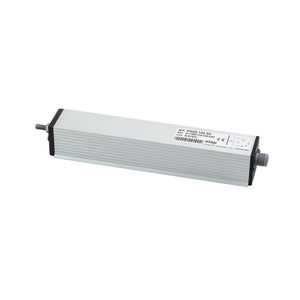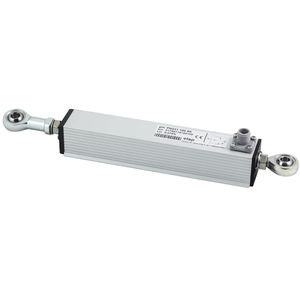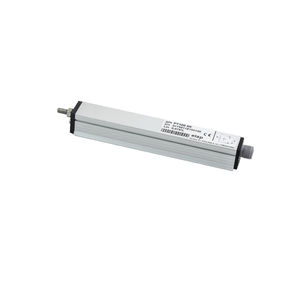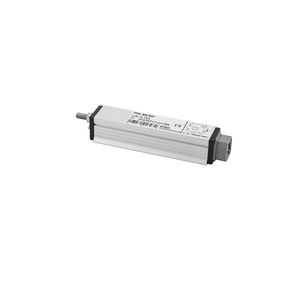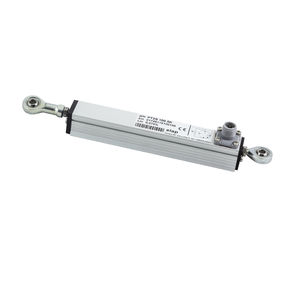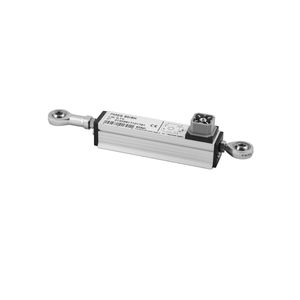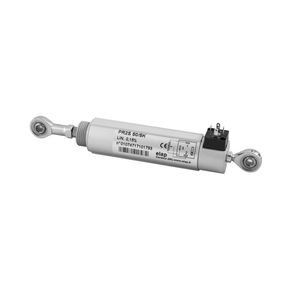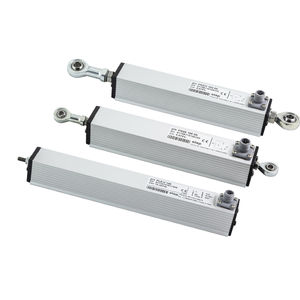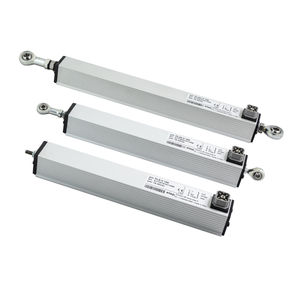
Linear position sensor PL231potentiometerresistancewith potentiometric output
Add to favorites
Compare this product
Characteristics
- Type
- linear
- Technology
- potentiometer, resistance
- Output signal
- with potentiometric output
- Protection class
- IP65
- Applications
- industrial, rugged, for robotics, heavy-duty, OEM applications, for machine tools
- Other characteristics
- compact, rugged, absolute, precision, vibration-resistant
- Measuring range
Min.: 50 mm
(1.97 in)Max.: 750 mm
(29.53 in)- Linearity
0.1 %
Description
The linear motion potentiometers series PL231 have a 31 mm square section housing, 8 mm diameter shaft and two fixing ball joints at the ends. Their measuring strokes range from 50 to 750 mm, and their standard resistive value is 5 KOhm.
The conductive plastic resistive element grants the transducer a long life (100,000,000 motions), high independent linearity and virtually infinite resolution.
Thanks to their high protection degree against environmental agents the potentiometers series PL231 are suited for severe applications, even outdoors, at extreme temperatures.
AVAILABLE STROKES
mm 50 – 100 – 150 – 200 – 250 – 300 – 400 – 500 – 750
AVAILABLE RESISTIVE VALUES
5 Kohm (standard) – 10 Kohm on request
TECHNICAL SPECIFICATIONS
- conductive plastic resistive element
- 100,000,000 operations life
- infinite resolution
- excellent linearity
- moving speed up to 5 m/sec.
- shaft diameter 8 mm
- stout aluminium housing
- easy fixing by ball joints or movable clamping brackets
- electrical connections by orientable connector
- operating temperature: -20° ÷ +80° C
- IP65 protection degree
- 2 ball joints at the ends, 8 mm diameter
Catalogs
Exhibitions
Meet this supplier at the following exhibition(s):

Related Searches
- Angular encoder
- Incremental encoder
- Incremental rotary encoder
- Digital panel meter
- Absolute rotary encoder
- Position transducer
- Panel-mount panel meter
- Solid-shaft rotary encoder
- Hollow-shaft rotary encoder
- Optical rotary encoder
- Industrial rotary encoder
- Linear position transducer
- Magnetic rotary encoder
- IP65 rotary encoder
- IP67 rotary encoder
- Aluminum rotary encoder
- DC rotary encoder
- Displacement transducer
- Analog output position sensor
- Compact rotary encoder
*Prices are pre-tax. They exclude delivery charges and customs duties and do not include additional charges for installation or activation options. Prices are indicative only and may vary by country, with changes to the cost of raw materials and exchange rates.





